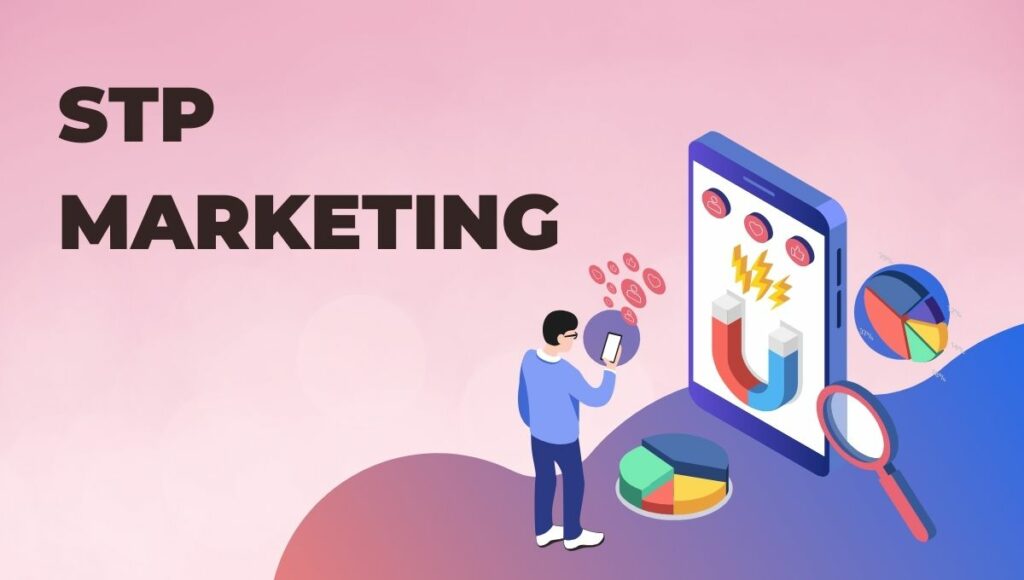Ever wondered how some brands seem to know exactly what you need, even before you do? In a scenario of upstaging businesses nowadays, knowing your customers and customizing your message as per the peculiar needs of audiences has become a must-have, rather than a nice-to-have. And that's where STP marketing- segmentation, targeting, and positioning- steps in, making an actual difference in getting to your customers. Let’s dive into the essence of STP marketing and uncover why it’s a game-changer for businesses of all sizes.
What is STP in Marketing?
Typically, STP marketing is a technique used for determining and matching the expectations of the particular target audience. Through market segmentation, selecting certain critical segments, and making out a unique positioning strategy, it can prove to be more productive and have results. However, what do each step entail?
Segmentation: this is a general term for breaking down a broad market or a specific segment into smaller, more manageable groups with regards to the demographic, behavior, or needs of the groups. What it aims for is to identify distinguishable units consisting of specific kinds of people, within whom preferences are likely to be homogeneous.
Targeting: Once the segmentation is done, the next thing obvious in it is deciding which target markets to keep indicated in the segmentation process. With targeting, it ensures that all efforts and resources are concentrated on the most promising groups in the audience.
Positioning: Finally, positioning speaks about how the brand or product is seen in the minds of the target audience. It is a core value proposition why the customer's needs have a compelling argument to buy.
Importance of STP in Marketing
To thrive in today's complex and competitive marketplace, an organization must understand the importance of STP in marketing. Here are reasons why STP is worth.
Precision Marketing: Unlike the traditional one-size-fits-all mechanizations of marketing, STP marketing encourages the proper tailoring of marketing strategies to the particular audience segment of concerns to realize greater engagement and conversion. It is a very effective strategy since the marketing message resonates deeper inside the intended audience, establishing a greater emotional connect.
Resource Efficiency: The potential market segments holding high potential enables the organization to spend resources where there is a possibility of achieving better returns on investments. A company may spend less time and money on unprofitable segments and, instead, invest in the most promising ones.
Strong Brand Loyalty: A well-placed brand well understood by its audience under the premise articulated applies will build trust and loyalty. This will ensure that the customer relationship is long-lasting. Loyal customers are more likely to bring new customers through word-of-mouth publicity, again generating organic growth. More than that loyalty brings repeat purchase, which is less costly to source compared to acquiring new customers.
How to Develop an STP Marketing Strategy
Building an effective STP marketing strategy involves a step-by-step approach:
1. Conduct Market Research
Start by gathering data about your potential customers. Use surveys, focus groups, and market analysis tools to understand their behaviors, preferences, and pain points.
2. Segment Your Market
Divide your audience based on criteria like:
- Demographics: Age, gender, income level, education.
- Psychographics: Values, interests, lifestyle.
- Behavior: Purchase habits, brand loyalty, usage rates.
3. Evaluate and Select Target Segments
Assess each segment’s size, profitability, and compatibility with your business objectives. Prioritize segments that align with your strengths and offer growth opportunities.
4. Craft a Positioning Statement
Develop a unique value proposition for your target audience. This statement should address:
- What you offer.
- How it benefits the audience.
- Why you are the best choice.
5. Execute and Monitor
Roll out your marketing campaigns tailored to each target segment. Continuously track performance metrics and refine your strategy as needed.
Real-Life Examples of STP Marketing in Action
- Nike: Nike segments its market based on athletic interests and skill levels. From professional athletes to casual joggers, Nike’s targeted campaigns and personalized products resonate with each group.
- Coca-Cola: With its diverse product line, Coca-Cola targets various segments, including health-conscious consumers with Diet Coke and environmentally aware customers with sustainable packaging initiatives.
- Apple: Apple’s positioning strategy highlights innovation and premium quality, appealing to tech-savvy, high-income segments.
FAQs About STP Marketing
1. What is STP in marketing?
STP in marketing stands for segmentation, targeting, and positioning. It’s a strategy that helps businesses identify their most valuable audience segments, focus their marketing efforts on these groups, and create a strong brand perception.
2. Why is STP marketing strategy important?
An STP marketing strategy enables businesses to deliver personalized messages, allocate resources efficiently, and build stronger connections with their audience, leading to increased engagement and loyalty.
3. How does STP marketing differ from traditional marketing?
Traditional marketing often uses a broad approach, while STP marketing emphasizes personalization and precision by addressing specific audience segments.
4. Can small businesses benefit from STP marketing?
Absolutely! Small businesses can use STP marketing to identify niche markets, minimize wasteful spending, and build a loyal customer base.
5. How does STP marketing align with a senior leadership program?
A senior leadership program, much like STP marketing, focuses on targeted skill development and strategic positioning for career growth. It equips leaders with tools to analyze and segment markets, ensuring more effective decision-making.
The Role of a Senior Leadership Program in STP Marketing
To excel in STP marketing, senior leaders must possess a clear understanding of market dynamics and strategic thinking. A senior leadership program bridges this gap by:
- Enhancing analytical skills to identify market segments.
- Cultivating strategic decision-making abilities for effective targeting.
- Empowering leaders to craft compelling positioning strategies.
By enrolling in a senior leadership program, you’ll gain the expertise needed to drive impactful STP marketing initiatives.
Conclusion
The speed with which businesses are changing adoptions of the STP marketing framework for the company at large will soon go a long way towards retaining relevance in the future. Understand the audience through segmentation, fine-tune the efforts toward them using targeting, and create a differentiating position with a brand that people will remember; everything else becomes an outcome of it.
Be it a novice entrepreneur or an experienced executive, implementing an STP marketing strategy can define new paths for growth and differentiation from the rest of the horde. Ready to harness the power of STP marketing? Start today and watch your business thrive.









